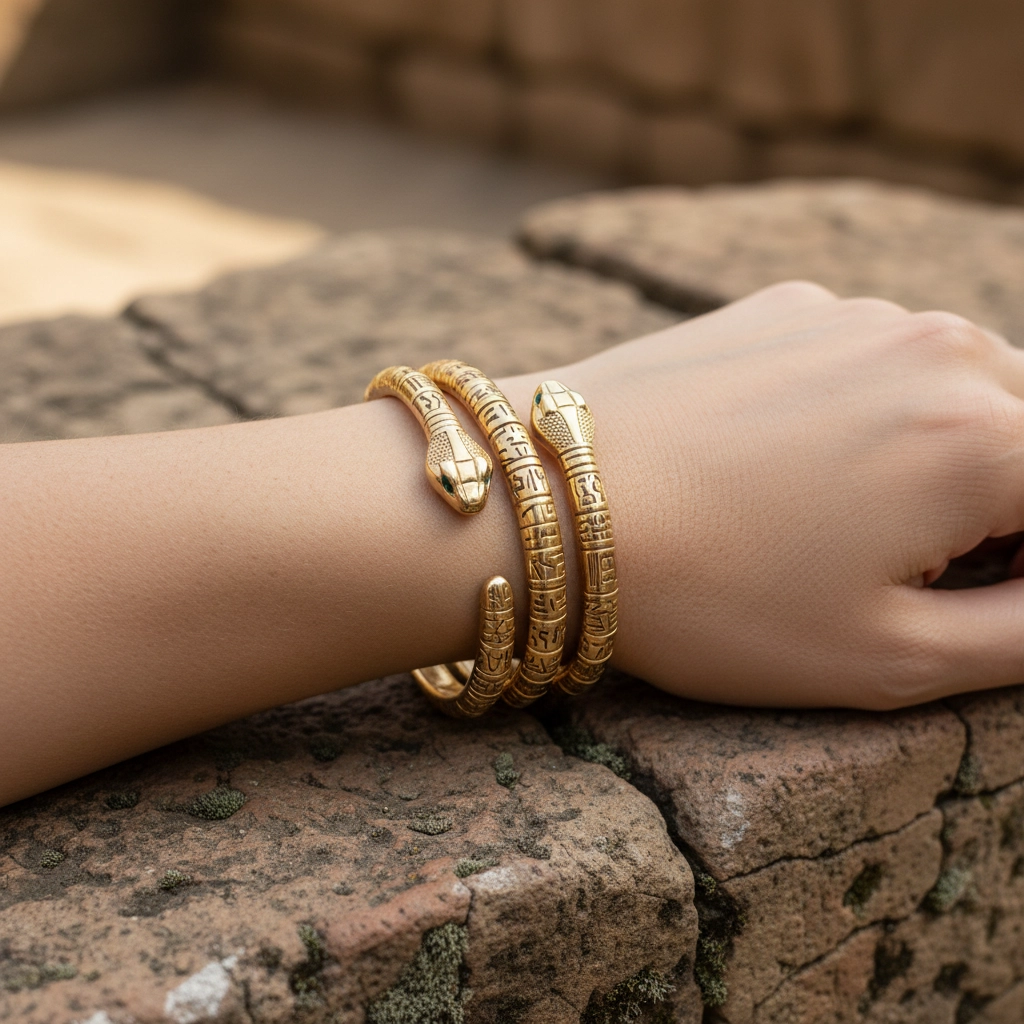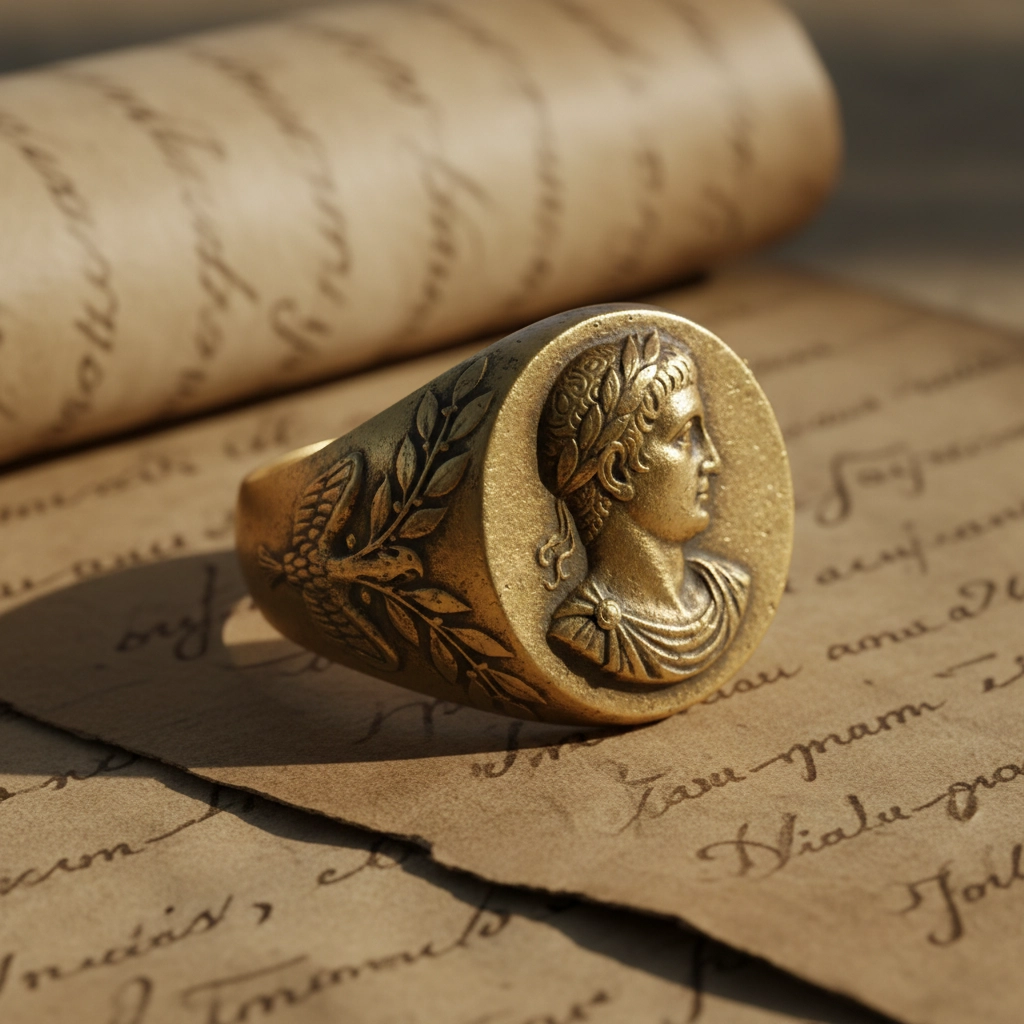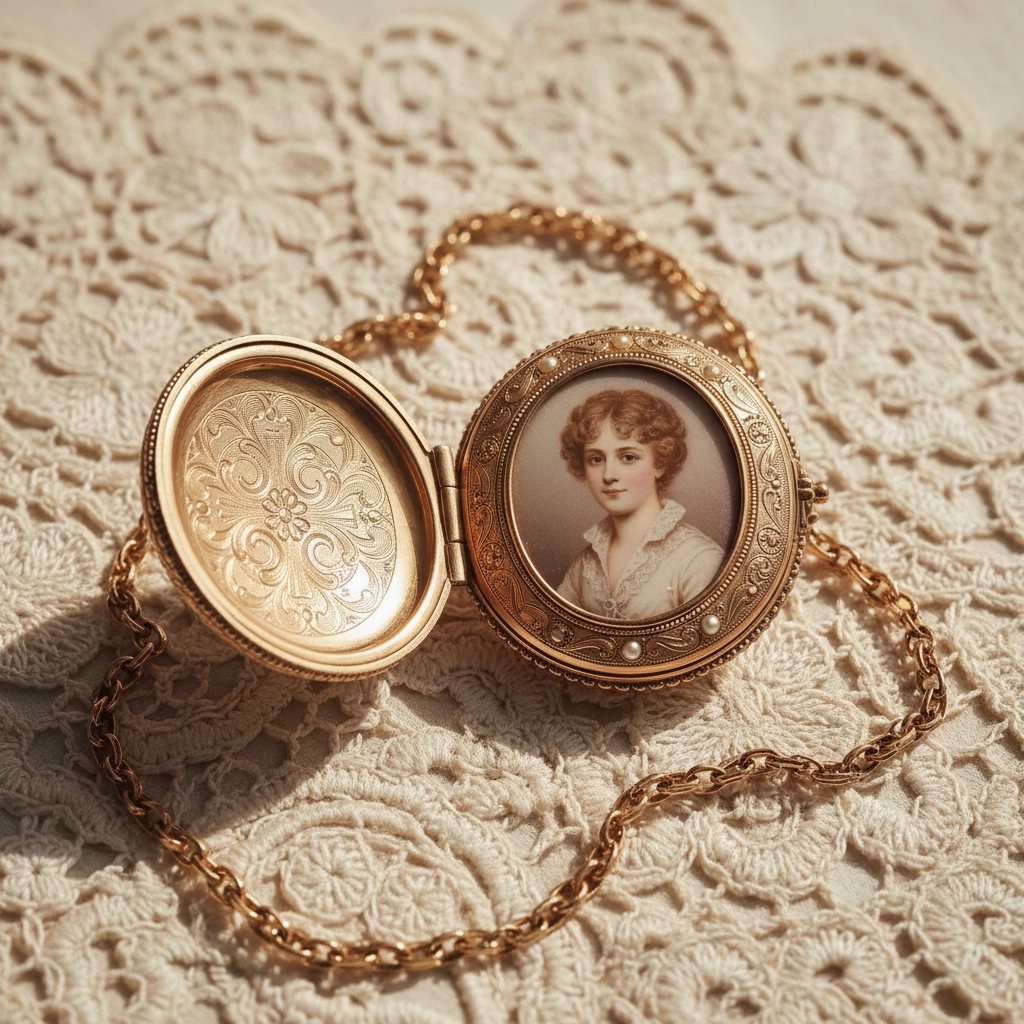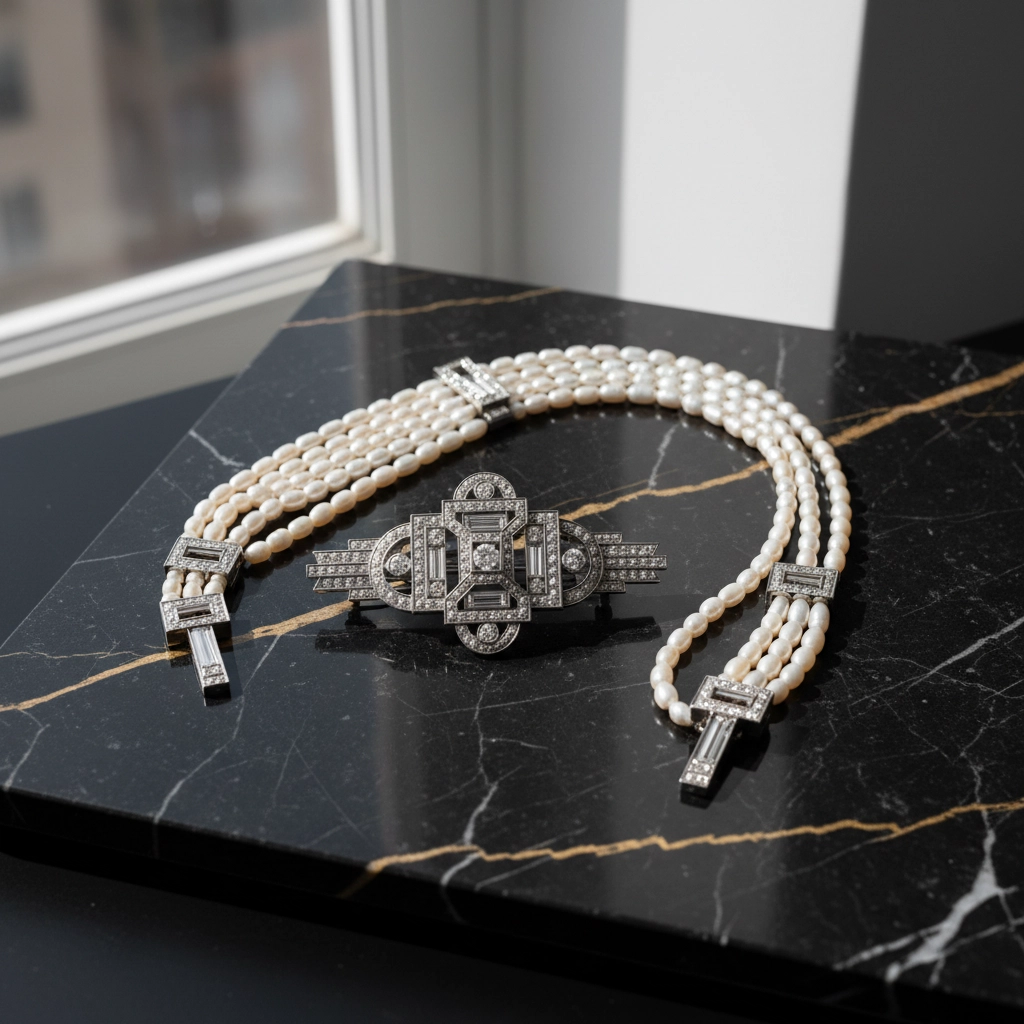Signature Saturdays: Jewelry Inspired by Legendary Figures : From Ancient Icons to Art Deco Muses
Welcome to our first "Signature Saturdays" post! I'm excited to launch this new series where we dive into the stories behind legendary jewelry pieces and explore how they continue to inspire modern designs. Today, we're taking a fascinating journey through time, following the jewelry trails left by history's most iconic figures.
Have you ever wondered why certain jewelry motifs never go out of style? Or why a simple serpent bracelet can make you feel like royalty? The answer lies in the legendary figures who made these pieces famous centuries: sometimes millennia: ago.
Ancient Egypt: Cleopatra's Serpent Legacy
Let's start our journey in ancient Egypt, where perhaps no figure looms larger in jewelry history than Cleopatra VII. The last pharaoh of Egypt wasn't just politically powerful; she was a master of using jewelry as a tool of influence and mystique.

Cleopatra's most famous jewelry motif? The serpent. She famously wore golden serpent bracelets that coiled around her arms, and legend has it that her final headpiece featured a striking cobra design. But this wasn't just about looking dramatic: serpents symbolized divine protection and royal power in Egyptian culture.
What's fascinating is how this ancient symbolism has evolved. Modern serpent jewelry maintains that sense of mystery and power that Cleopatra embodied. When you see a sleek snake bracelet today, you're looking at a design language that's over 2,000 years old. The curves, the way it wraps around your wrist or finger, the hypnotic quality: it all traces back to those ancient Egyptian beliefs about transformation and eternal life.
I often notice how people react differently when they wear serpent jewelry. There's something about slipping on a snake ring that makes you stand a little taller, doesn't there?
Roman Empire: The Authority of Signet Rings
Moving into the Roman era, we encounter a completely different approach to legendary jewelry. Roman emperors and nobility didn't just wear jewelry for beauty: they wore it for business.
The signet ring became the ultimate symbol of authority. Julius Caesar, Augustus, Marcus Aurelius: they all carried their power literally at their fingertips. These rings weren't decorative; they were functional tools used to seal documents, mark property, and authenticate orders that could change the course of history.

What I find incredible is how personal these rings were. Each featured unique carved intaglios: often depicting the wearer's profile, family crest, or personal symbols. Marcus Aurelius, the philosopher emperor, chose designs that reflected his Stoic beliefs. Others opted for images of their military victories or mythological figures they felt connected to.
Today's signet rings carry that same sense of personal authority and heritage. Whether it's a family crest passed down through generations or a custom design that speaks to your own story, modern signet rings tap into that ancient Roman understanding that jewelry can be both deeply personal and powerfully public.
Renaissance Splendor: The Medici Influence
Fast-forward to Renaissance Italy, where the Medici family revolutionized how we think about gemstones and their meanings. Lorenzo the Magnificent and his descendants weren't just art patrons: they were jewelry innovators who understood that the right gem could convey messages of wealth, sophistication, and cultural refinement.
The Renaissance period introduced us to the idea that different gemstones held specific powers and meanings. Emeralds for rebirth and love, sapphires for wisdom and divine favor, rubies for passion and courage. The Medici collection included some of the most spectacular gem pieces of the era, often incorporating these symbolic meanings into intricate designs.

What's remarkable is how Renaissance jewelry-making techniques: particularly the art of cameo carving and detailed metalwork: continue to influence luxury jewelry today. Those elaborate settings and careful attention to proportion that we associate with fine Italian craftsmanship? That aesthetic language was largely developed during the Medici era.
Victorian Revival: Romantic Legends
The Victorian era brought us something entirely new: jewelry inspired by romanticized versions of historical figures. Queen Victoria herself was obsessed with medieval legends and ancient symbolism, and this fascination shaped an entire generation's approach to jewelry design.
Victorian jewelers created pieces inspired by legendary figures like King Arthur, medieval queens, and classical goddesses. They popularized the use of symbolic elements: hearts for love, anchors for hope, crosses for faith. But what made Victorian jewelry special was how it combined these ancient symbols with new techniques like electroplating and precision gem-cutting.
The locket became the quintessential Victorian piece, allowing people to carry portraits of their own personal legends: beloved family members, romantic partners, or admired public figures. These weren't just accessories; they were intimate storytelling devices.

Think about the jewelry in your collection that holds the most meaning. Chances are, it follows that Victorian tradition of combining beautiful design with personal significance.
Art Deco Era: The Gatsby Generation
And finally, we arrive at the Art Deco period of the 1920s and 1930s, when legendary figures weren't just historical: they were happening in real time. This is the era of Jay Gatsby, Coco Chanel, and the legendary flappers who redefined what it meant to be glamorous.
Art Deco jewelry broke every rule that came before it. Where Victorian pieces were elaborate and symbolic, Art Deco was clean and geometric. Where Renaissance jewelry showcased traditional gemstones, Art Deco experimented with materials like platinum, onyx, and geometric diamonds cuts.
The legendary figures of this era: both fictional like Gatsby and real like Josephine Baker: wore jewelry that was bold, modern, and unapologetically dramatic. Long pearl necklaces weren't just elegant; they were statements of independence. Geometric diamond brooches weren't just beautiful; they were manifestos of modernity.

F. Scott Fitzgerald's description of Daisy Buchanan's jewelry in "The Great Gatsby" perfectly captures this era: pieces that seemed to contain all the glamour and possibility of the modern world. Art Deco jewelry promised that you could reinvent yourself, that you could be as legendary as the figures you admired.
The Continuing Legacy
What strikes me most about this journey through legendary jewelry is how each era's iconic pieces continue to speak to us today. That serpent bracelet connects you to Cleopatra's power. A signet ring channels Roman authority. A cameo piece echoes Renaissance artistry. A locket holds Victorian sentimentality. And those geometric Art Deco lines still feel impossibly modern.
The beauty of jewelry inspired by legendary figures isn't just in the craftsmanship: it's in the stories these pieces allow us to tell about ourselves. When we wear jewelry that echoes these historical icons, we're not just accessorizing. We're connecting to something larger than ourselves, tapping into narratives of power, romance, rebellion, and transformation that have captivated humanity for thousands of years.
Next week, we'll dive into the fascinating world of pearls and explore how these lustrous gems have maintained their status as symbols of elegance from Edwardian ballrooms to modern red carpets. Until then, take a moment to look at your own jewelry collection. What legendary stories are your favorite pieces telling?
Cheers,
Peter